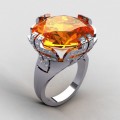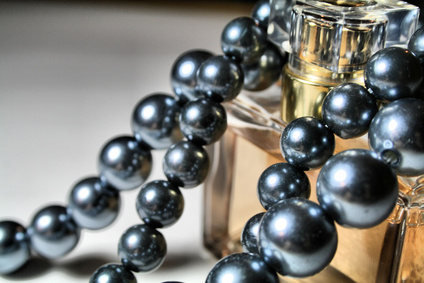Cutting Your Ring to Resize It
Usually, in order to resize a ring, jewelers cut its band and then increase or decrease its size before rejoining it.

To resize a ring, jewelers cut the band and then increase or decrease its size.
To increase the size of your ring, the jeweler will spread it as much as needed after cutting it and will then add a new piece of metal to fill the gap.
Decreasing a ring’s size works in a similar fashion: The jeweler will cut out a strip from the ring and narrow the band by joining the two ends together.
After the resizing is done, the jeweler will put your ring back together by soldering the band where it was cut.
Resizing Leaves a Weak Spot
When a ring is resized, the place where it was cut and then soldered becomes weaker.
It also doesn’t help that these cuts are made at the band’s bottom part, which is subjected to the most stress when you wear your ring (if the ring is designed to have a top and bottom).
And if you exert pressure on it, the place where your ring is soldered can break. However, if the jeweler has done the resizing properly, that risk should be minimized.
Tip: Some diamond ring retailers like James Allen and Brian Gavin Diamonds offer free resizing during a certain period after the purchase, under certain conditions. So, when buying jewelry, look at the additional terms and guarantees, as they can save you additional money.
Resizing: What Can Go Wrong
Sometimes, when resizing a ring, the jeweler might not solder it back together properly. As a result, the joint will be more likely to break in the future.
How can you tell if the resizing job has left your ring weaker than before?
Look at the place where the ring was joined. If the ring has been soldered properly, there should be no depression in the surface, which should be flat and polished.
If the band is thinner at that spot and you can see a dented line, then the soldering will be more likely to break.
(If the soldering alloy is of a different color, you might still see a line, but as long as the surface is even, there shouldn’t be a problem with durability.)
So, if you can see a nicked line where your ring was joined, you can ask your jeweler to strengthen the joint. Usually, this comes down to adding more metal to the soldering and polishing the place to make it even with the rest of the ring’s shank.
However, keep in mind that if your ring is made of platinum, due to the specific properties of this metal, you will most likely be able to see a line at the joint even when the resizing was done properly.
When a Ring Cannot Be Resized
There is a limit to how much the size of a ring can be changed, if at all.
If the desired increase or decrease is more than one or two sizes, then it is unlikely that resizing would be possible without putting the ring at risk of damage.
Some metals are just hard to resize. For example, most jewelers cannot resize titanium rings as the traditional approach of cutting and rejoining doesn’t work with this metal.
Other methods such as stretching, carving out, or adding additional material can be employed, but their effectiveness has limits.
Some ring settings are nearly impossible to resize – usually those with gemstones in the band. For example, diamond/gemstone rings with channel-set stones are hard to resize. (Read this guide to learn more about ring settings.)
If you have gemstones in your ring, they will need to be removed before the ring can be resized.
However, if the stones are not mounted using a traditional prong setting, taking them out without damaging the ring may be impossible.
In such cases, unless the stone is a diamond or another gem that can take heat, resizing may not be possible because the high temperature needed to solder the ring can damage the stone. This is the case with rings made of platinum, sterling silver and palladium.
In general, make sure that your ring fits as well as possible before you buy it because resizing it later could involve a lot of hassle and may even be impossible.














